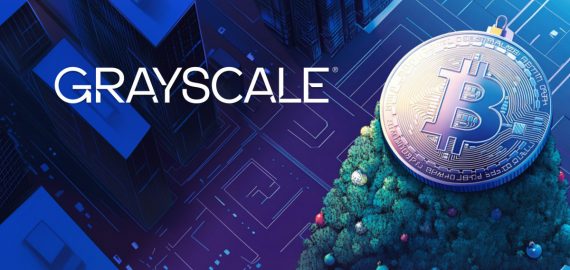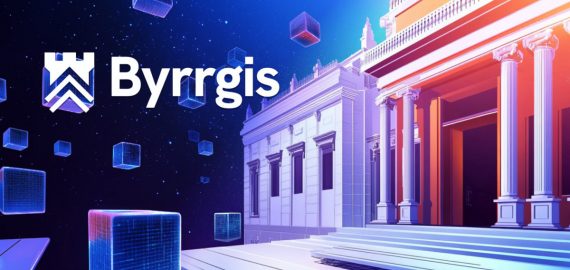Emerging Trends in Web3 Gaming: Boosting Development Efficiency and Creating User-Friendly Experience


In Brief
Christina Macedo, CEO of READYgg, discusses Web3 gaming and its potential to transform game development, player engagement, and monetization while also addressing regulatory considerations and AI integration.
In this discussion Christina Macedo, CEO of READYgg, shares her insights into the world of Web3 gaming, highlighting the shift towards true ownership of digital assets, the current state of the industry, and the challenges and opportunities that lie ahead. She delves into how Web3 can transform game development, player engagement, and monetization while also addressing regulatory considerations and the integration of emerging technologies like artificial intelligence.
Let’s start with the basics. What is Web3 gaming, and how is it different from traditional gaming?
Web3 gaming is really a shift, primarily in terms of ownership. In traditional gaming, when a player bought assets or created data, they didn’t actually own those assets or data. The evolution with Web3 gaming is that this changes. Now, when a player purchases something, they truly own it and can use it however they want. Additionally, when a player creates data on the blockchain, they own that data and can monetize it themselves rather than a third party monetizing it.
When we talk about community, for example, the community is elevated in Web3 because players really do identify as themselves within this ecosystem. One of our significant innovations is the concept of the on-chain player profile or player ID, which elevates the player’s digital identity.
Everything players own, and all the data they produce belong to them. This opens up new opportunities for players to monetize their assets by selling them or monetizing their data by sharing it with third parties or whomever they choose. In contrast, in Web2, companies like Facebook and Google sell your data for their benefit, and you get nothing in return.
What do you think is the current state of Web3 gaming?
We’re still at a very early stage. There aren’t a lot of developers building in this space yet, which is why we created Readygg. Our goal is to enable every developer, from solo creators to large publishers, to enter the Web3 gaming space and innovate game mechanics.
Currently, many developers are using our solutions to bring existing IP and Web2 games into Web3, essentially migrating them. This is powerful because it means that the proven game mechanics that players love can now be enhanced in Web3, elevating the game experience for players.
The current status is very much about development and innovation, with tools now available to encourage developers to build. This is one of the most exciting times for Web3 as we’re seeing a variety of creators coming into the space to create content for traditional gamers and making the entry into Web3 gaming as seamless as possible.
What do you think are the challenges preventing further adoption of Web3 gaming?
The main challenge is that we don’t have enough developers building in this space. We need thousands of game mechanics built on the blockchain to offer a wide variety of products that can attract different types of players. For example, mobile survival games need to exist on Web3 for those players to be interested.
Another challenge is creating a seamless experience for players. Wallets need to be integrated into games smoothly, and the overall game experience should be as if there are no Web3 obstacles. Players should just enjoy the game.
On the developer side, we need to make it incredibly easy for them to build Web3 games. This means providing seamless tools and support so they can create seamless experiences for players. Once we achieve this, I believe we’ll see organic growth and adoption in Web3 gaming.
What is the strategy to attract new developers to the industry?
Our approach involves leveraging our team’s extensive background in gaming. We’ve worked with multiple big studios, supported esports teams, and have experience as publishers. Our advisors, like Shawn Layden, the ex-CEO of Sony Entertainment PlayStation, and Strauss Zelnick, the CEO and chairman of Zynga, also bring valuable insights.
We explain to developers how they can optimize their games in Web3, improve monetization, and reduce user acquisition costs. Traditional user acquisition has become incredibly expensive, but we’re showing lower costs, higher retention, and higher average revenue per daily active user (ARPDAU). When developers see these KPIs and case studies, they become interested in trying Web3 because they see the benefits.
We also highlight the potential of integrating marketplaces into games, allowing developers and players to own, use, and trade assets in ways that were not possible before. This new e-commerce opportunity within games is very attractive to developers.
What problems in Web2 gaming can Web3 solve or mitigate?
Ownership is the main issue. In Web2 gaming, if a game shuts down, all the money and effort a player has invested disappears. In Web3, everything a player achieves or owns on-chain belongs to them, creating a permanent record of their accomplishments.
Another issue in Web2 is the high cost of user acquisition due to multiple intermediaries. Web3 allows developers to connect directly with players, significantly reducing costs. Developers can incentivize players directly, resulting in much lower CPIs (cost per install).
Do you think the Play-to-Earn concept and tokenized rewards are the only ways to attract new people to Web3 gaming, or are there other methods?
Play-to-earn is just one genre of gaming. It still has room for innovation and optimization. However, we shouldn’t undervalue collections. People love to collect items they are passionate about, and Web3 offers true ownership and appreciation of these collections.
User-generated content (UGC) is another powerful driver. Allowing players to become creators and participate in the IP they love can significantly enhance the gaming experience. UGC-powered games will likely be a major trend, enabling players to create and sell assets within the game and creating new monetization opportunities for both players and developers.
How do you see the role of artificial intelligence in Web3 gaming?
AI has a significant role to play in Web3 gaming. For developers, we’re creating AI agents that act as additional engineering resources, helping to build and integrate our technology faster and more efficiently.
On the entertainment side, AI can help players create content more easily. Not everyone is skilled at drawing or designing, but people have great ideas. AI can turn these ideas into assets through text-based creation tools, making it easier for players to become creators and contribute to the game’s content.
Besides AI, what other trends in blockchain and crypto could influence Web3 gaming?
The main trend is making everything very user-friendly. The last bear market taught us that without commercial adoption, projects struggle to survive. For gaming, popularity is driven by numbers, especially for mobile games, which dominate the market.
To achieve adoption, we need to make Web3 gaming accessible and user-friendly. This means embracing free-to-play models, focusing on mobile gaming, and ensuring seamless experiences for players. Commercial viability is crucial for the success of Web3 gaming.
Do you think Web3 gaming could face any legal issues, or is it free from regulatory concerns?
I believe some areas, like play-to-earn mechanics, could face regulatory scrutiny due to their pay-to-play nature. However, many aspects of Web3 gaming, like selling digital assets, are similar to existing markets like social casino gaming, which already have regulatory frameworks.
Developers need to consider taxes and other legal obligations, but these are issues they’ve likely encountered before. Regulatory challenges will depend on the specific game mechanics and how they are implemented.
Disclaimer
In line with the Trust Project guidelines, please note that the information provided on this page is not intended to be and should not be interpreted as legal, tax, investment, financial, or any other form of advice. It is important to only invest what you can afford to lose and to seek independent financial advice if you have any doubts. For further information, we suggest referring to the terms and conditions as well as the help and support pages provided by the issuer or advertiser. MetaversePost is committed to accurate, unbiased reporting, but market conditions are subject to change without notice.
About The Author
Victoria is a writer on a variety of technology topics including Web3.0, AI and cryptocurrencies. Her extensive experience allows her to write insightful articles for the wider audience.
More articles

Victoria is a writer on a variety of technology topics including Web3.0, AI and cryptocurrencies. Her extensive experience allows her to write insightful articles for the wider audience.

















































